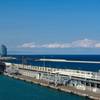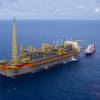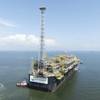An independent review conducted and reported today by the Oregonian concludes that the government’s economic justifications for a controversial proposal to dredge the Columbia River are deeply flawed. The Corps of Engineers wants to spend $196 million to dredge more than 100 miles of the Columbia River. In a three-part series beginning today, the Oregonian will report that deficiencies in the analysis have significantly inflated the benefits to the region and an underestimated the costs to taxpayers.
“The Corps of Engineers’ math does not add up,” said David Moryc, Lower Columbia River Coordinator for American Rivers. “Even if we weren’t in an era of tight budgets this current project would qualify as a taxpayer boondoggle.”
Since the Corps released their final Environmental Impact Statement in 1999, independent scientists and groups opposing the dredging project and have repeatedly called for an independent economic analysis. In some examples such as sediment volume, the Corps analysis drastically underestimates costs. Scientists believe the Corps has underestimated the amount of sediment that will have to be dredged to construct and maintain the new channel by nearly 140 percent. Inaccurate estimates of total dredging volumes can have a ripple effect. For example, increased volumes will create additional costs in actual dredging work, locating and purchasing disposal sites, environmental costs of additional disposal sites and increased maintenance dredging. Volatile changes in foreign markets have also considerably altered the outlook for international shipping trends in the northwest. In the past two years Evergreen and Hanjin, tow major carriers of ocean going freight have pulled out of Portland. The initial economic analysis projected shipping volumes and therefore benefits that have not materialized.
“The analysis underestimates the real damage to natural resources and local communities of the lower Columbia while ignoring sensible alternative,” Moyrc said.
Millions of dollars is being invested in the Lower Columbia River and estuary for habitat restoration and land acquisition. The estuary offers critically important habitat to salmon, sturgeon, Dungeness crab and over 2000, over-wintering migratory birds. Twelve populations of salmon depend on the lower Columbia River and estuary for refuge, rearing and habitat as they make their transition from freshwater to saltwater.
Sponsored Content
Safer Starts Here: Build Ships, Protect Crews

Featured videos

Efficient Maritime Operations Transcend Data; Intelligence is Key

Meet the Volvo Penta IPS Electric (E)

Maritime Energy Transition: Cummins Focuses on Methanol
July 2025
 Read the Magazine
Read the Magazine

 Read the Magazine
Read the Magazine
This issue sponsored by:

Precision in Motion – Inside American Fan’s Mission to Support the U.S. Navy Fleet
Subscribe for
Maritime Reporter E-News
Maritime Reporter E-News is the maritime industry's largest circulation and most authoritative ENews Service, delivered to your Email five times per week








